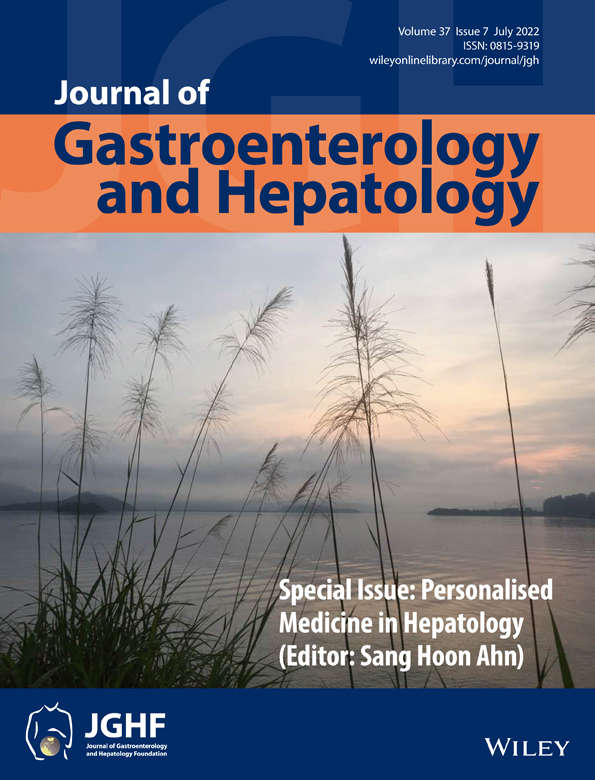Comparison of safety and short-term outcomes between endoscopic and laparoscopic resections of gastric gastrointestinal stromal tumors with a diameter of 2–5 cm
Declaration of conflict of interest: Drs Yan-Bo Liu, Xin-Yang Liu, Yong Fang, Tian-Yin Chen, Jian-Wei Hu, Wei-Feng Chen, Quan-Lin Li, Ming-Yan Cai, Wen-Zheng Qin, Xiao-Yue Xu, Linfeng Wu, Yi-Qun Zhang, and Ping-Hong Zhou have no conflicts of interest or financial ties to disclose.
Author contributions: Yan-Bo Liu: data curation; writing—original draft. Xin-Yang Liu: data curation; writing—original draft. Yong Fang: writing—original draft. Tian-Yin Chen: data curation; methodology; resources. Jian-Wei Hu: resources. Wei-Feng Chen: resources. Quan-Lin Li: resources. Ming-Yan Cai: resources. Wen-Zheng Qin: resources. Xiao-Yue Xu: resources. Linfeng Wu: data curation. Yi-Qun Zhang: conceptualization; supervision; writing—review and editing. Ping-Hong Zhou: writing—review and editing.
Financial support: This study was supported by Clinical Research Fund of Zhongshan Hospital Affiliated to Fudan University (2020ZXLC33) and Youth Fund of Shanghai Municipal Science and Technology Committee (20194Y0138). All authors disclosed no financial relationships relevant to this publication.
Abstract
Background and Aim
Developments of endoscopic techniques brought the possibility of endoscopic resection for gastrointestinal stromal tumors (GISTs) of larger sizes. We aim to compare safety and short-term outcomes between endoscopic and laparoscopic resections of gastric GISTs with a diameter of 2–5 cm.
Methods
This is a single-center, retrospective cohort study. The clinical data, perioperative conditions, and the adverse events of patients who underwent endoscopic or laparoscopic resection for gastric GIST of 2–5 cm in Zhongshan Hospital, Fudan University, from January 2016 to December 2020 were retrospectively reviewed.
Results
A total of 346 patients were reviewed; 12 patients who failed to accomplish the planned procedure were excluded; 182 underwent laparoscopic resection; and 152 underwent endoscopic resection. Significant differences exist in the tumor size between the laparoscopic group (3.43 ± 0.86 cm) and the endoscopic group (2.78 ± 0.73 cm) (P < 0.01). Compared with laparoscopic resection, endoscopic resection was associated with faster recovery (P < 0.01), shorter hospital stays (P < 0.01), and lower cost (P < 0.01). The incidence of Clavien–Dindo grade II–V adverse events in the endoscopic group (3/152) was significantly lower than that in the laparoscopic group (12/182) (P = 0.04). After a propensity score matching analysis, the endoscopic group showed similar incidences of complications with the laparoscopic group, while the advantages over laparoscopic resection in postoperative hospital stay, time to first oral intake, and hospitalization expenses remained significant (P < 0.01).
Conclusions
Endoscopic resection is a safe and cost-effective method for 2–5 cm of gastric GISTs compared with laparoscopic resection.




